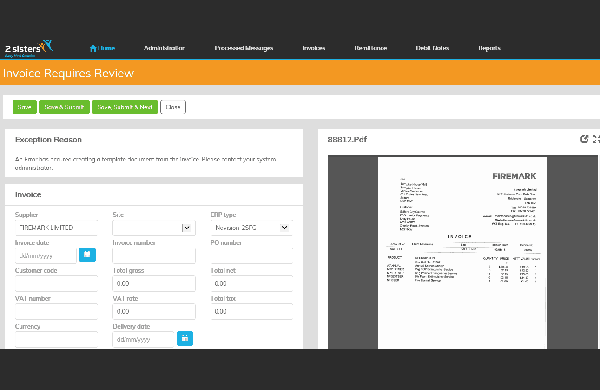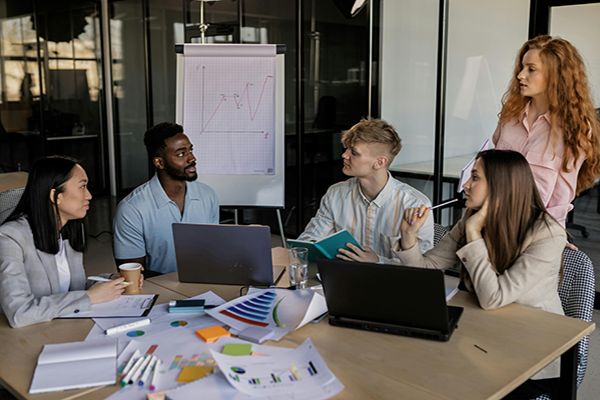AuraQ has vast experience helping organisations find the gaps that can be filled to enhance their business. This could be to improve efficiency, integrate legacy systems or deliver new portals and strategic applications to create competitive advantage. Contact us to request a free, no obligation Gap Analysis.
UK’s largest poultry supplier automates with RPA and low-code
A company’s success is often determined by its efficiency and productivity, the tricky balancing of value-added and non-value added work. To reduce the latter, the shared services centre of the 2 Sisters Food Group (2SFG), the UK’s largest supplier of poultry, started out on a journey to automate their processes. This was no small feat: 2SFG is an organisation that has grown through multiple acquisitions and employs 23,000 workers distributed over 42 sites across the UK. Now, two years into its automation journey, 2SFG considers itself ahead of its time and a thought leader in digitising shared services centres. This was all due in part to a combination of RPA and low-code development.
Recognising the need to digitise and automate
2SFG’s shared services centre does financial transactional processing for nearly 80% of the organisation’s 42 locations. Prior to embarking on their automation journey, most of those processes were manual and paper – or Excel-driven, requiring a lot of time and resources to complete. If they were to evolve into the more digitally-focused group they aspired to be, they would need to digitise and automate these processes. Jon Heeley, Automation Program Manager for 2SFG, evaluated the many transactions his department oversaw and discovered that one area to improve on was how they keyed data into the ERP system.
To solve this problem, 2SFG implemented a robotic process automation (RPA) platform. RPA is the use of software bots designed to handle high-volume, repeatable tasks. 2SFG implemented the RPA software to handle the keying of data and begin the process of reducing non-value added work. This was only the start to the solution, however, because there are limitations to RPA. For starters, you need well-structured data and quality information; otherwise, it’s not worth the investment. On top of data consistency, there’s the cost and speed of implementation, so if done poorly you’re looking at a long and costly timeline. Heeley and his team had only looked at the middle of the process that they were trying to automate. Heeley understood that for RPA’s value to be fully realised, inbound data needs to be cleansed and structured. Employees in the Accounts Receivable department were spending too much time (2.5 hours per day) putting information into an Excel sheet for the robot to key in.
Heeley reached out to AuraQ, a professional services provider focused on helping clients optimise business practices. AuraQ partner with Mendix to help their clients develop apps that augment business processes. AuraQ, using the Mendix Platform, helped Heeley and his team build a solution that structured inbound data for the software bots. This solution is TrajeQt. Mendix acts as an application layer (business processes and user interfaces) and, through APIs, works with legacy systems to cleanse and structure the data. While AuraQ designed and developed the TrajeQt application, they received input from members from the shared services group, who then also tested the development before launch. The app was developed in under four weeks, and the value was immediately apparent.
Value soars with automation
The success of the app’s launch empowered the shared services centre to continue using RPA and low-code to automate other Accounts Payable and Accounts Receivable transactional processes. Using RPA and low-code, Heeley and his team have since automated 11 transactional processes. Within six weeks, they had improved from being 100% manual to being 97% automated. The automation yielded positive results that range from cost-saving, increased efficiencies, and improved process quality. 2SFG estimates savings of £250,000 per year. Three of those processes hinged on the data-structuring application they built with the Mendix Platform extracting, parsing and cleaning the data to feed to the bots.
In one such instance, Heeley and his team used Mendix to create customer remittance advice templates. These templates are filled out by customers and then submitted to 2SFG. Each customer has a unique template to cater to their different needs. The data points the customers provide in the templates are then fed to the RPA bots. In three months, the 2SFG digital team built 300 invoice templates using Mendix’ Platform. To date, the shared services centre has created 3100 templates. Prior to the change, 65% of the invoices were slowed down by a verification process in which an employee had to verify data for accuracy for it to be keyed into the ERP system. With these new automated processes, Heeley and the digital team were able to reduce the number of invoices stopped for verification all the way down to just 8%.
While poultry is still 2 Sisters Food Group’s main offering, the shared services centre are now positioned to provide another commodity: Data. Automation has not only sped up their invoicing processes, it has also transformed the way 2SFG’s shared services employees work. While at first reluctant to the idea of automation replacing their work, employees at 2SFG have embraced the transformation that 2 Sisters has gone through, now doing more impactful work on the digital transformation initiative. With all that time spent on data capturing, structuring, and keying freed up, they now can spend more time on analysing cost and spend. That’s truly value-added work. To read more about the application, download our case study.










